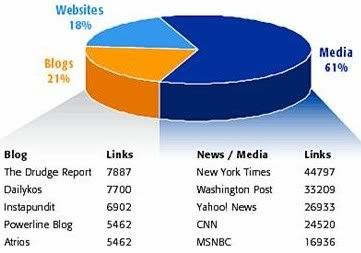The Benefits?
Knowing the fact, that we can have a personal page to pen our thoughts online for free is a pretty big deal. Blogs are free to own and it will offer people freedom of speech and limited restrictions to follow. Malaysia’s former Prime Minister, Dr Mahathir Muhammad recently establishes his own blog at www.chedet.com and quoted:
“Welcome to my Weblog. This site is dedicated to publishing my writings as and when I am able to pen my thoughts and opinions.”
Dr Mahathir Muhammad, 2008
In a glimpse, blogs literally connects people internationally and locally. Furthermore, with new features such as Rich Site Summary (RSS feeds), users can obtain updates on sites instantly. (Lemire, 2005)
What types of blogs are prevalent in Europe, Asia and America?
Due to limitations, I would like to stress upon blogs that made it big during the 2004’s American presidential election. There was a commotion between liberal and conservative blogs during the election. Regardless, blogs were one of the highest media preference for information. Matt Drudge’s ‘Drudge Report’ Blog http://www.drudgereport.com/ had been cited and linked for about 7800 times. (Intelliseek, BlogPulse 2008)

Intelliseek, Blogpulse.com 2008
In a nutshell, blogs had rise up tremendously being an unbiased preferred source of information, politically speaking of course.
What are the trends in Europe, Asia and America?
In Malaysia, the blogging trend is rapidly growing as broadband services are being fully utilized. Blog content are really diverse categories ranging from personal, humor, entertainment and politics. Based on the facts from www.sabahan.com , the most top influential blog in Malaysia goes to www.kennysia.com with 4,828 links from 2,406 blogs. There is about 28% of Malaysian bloggers writes about personal content, which is a big amount in my opinion.
What is the current size of blogsphere?
According to Bobbie Johnson, as of 2007 there is about 70 million blogs around the net worldwide and about 120,000 blogs created everyday. (Johnson, B. 2007) You can already estimate how huge the size of blogsphere today.
Reference List
BlogPulse Campaign Radar 2004. Viewed at 25th April 2008 at
http://politics.blogpulse.com/politics_summary.html
Blogs Marks the first 10years in Technology: The Guardian. Bobbie Johnson 2007. Viewed at
http://www.guardian.co.uk/technology/2007/apr/07/blogging.news
Dr. Mahathir Muhammad’s Weblog. Viewed at 6th May 2008 at
http://www.chedet.com/
Daniel Lemire’s Blog , Montreal Canada. Viewed at 26th April 2008 at
http://www.daniel-lemire.com/blog/archives/2005/02/10/real-benefits-of-blogs/
Sabahan.com: About computers, Blogging, Making Money Online, Marketing and Interesting Stuff. Viewed on 7th May 2008 at
http://www.sabahan.com/2007/02/06/50-most-influential-blogs-in-malaysia














